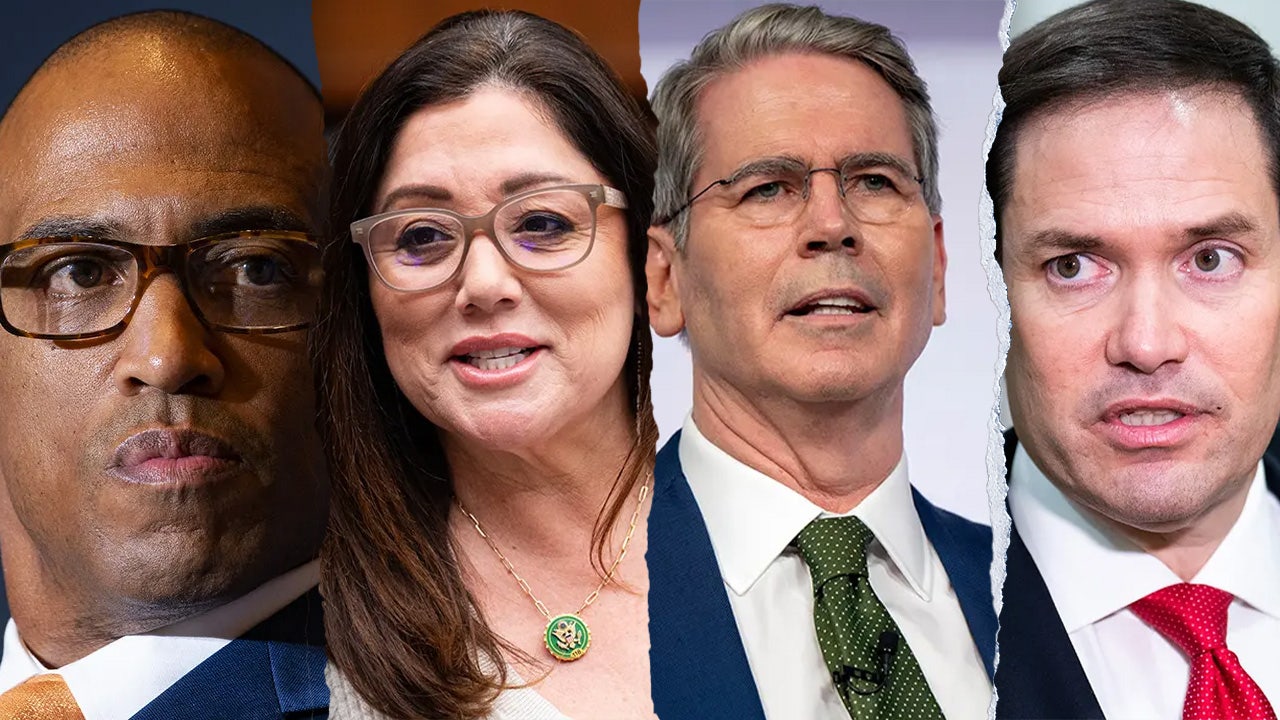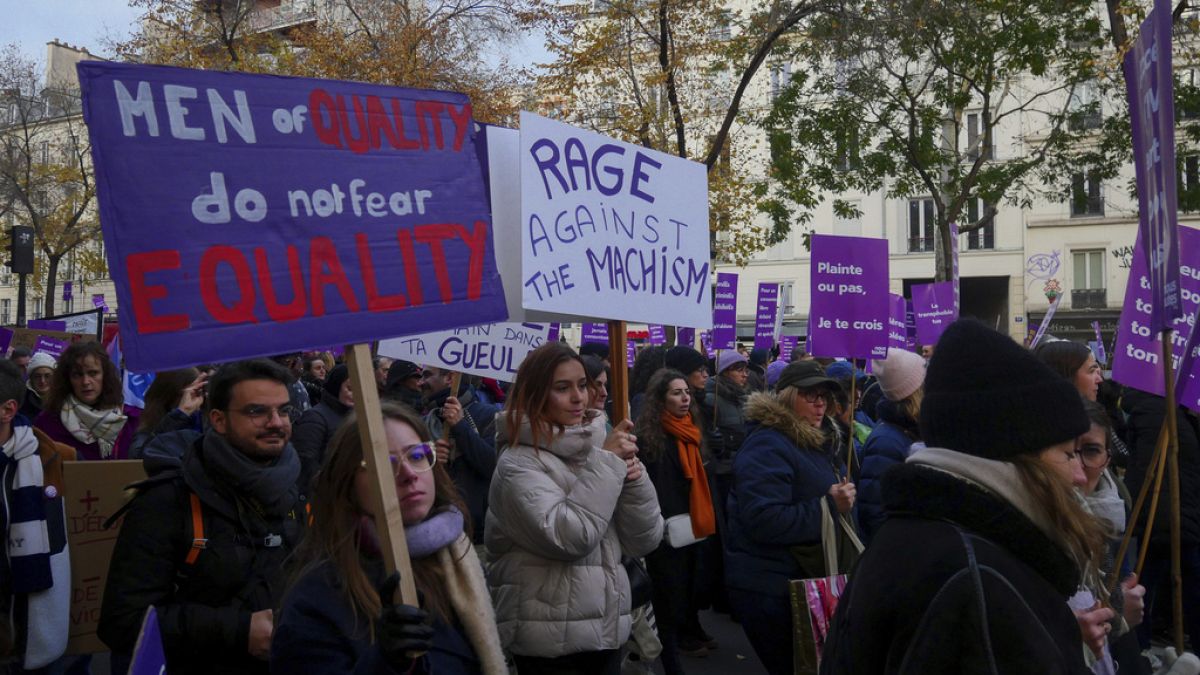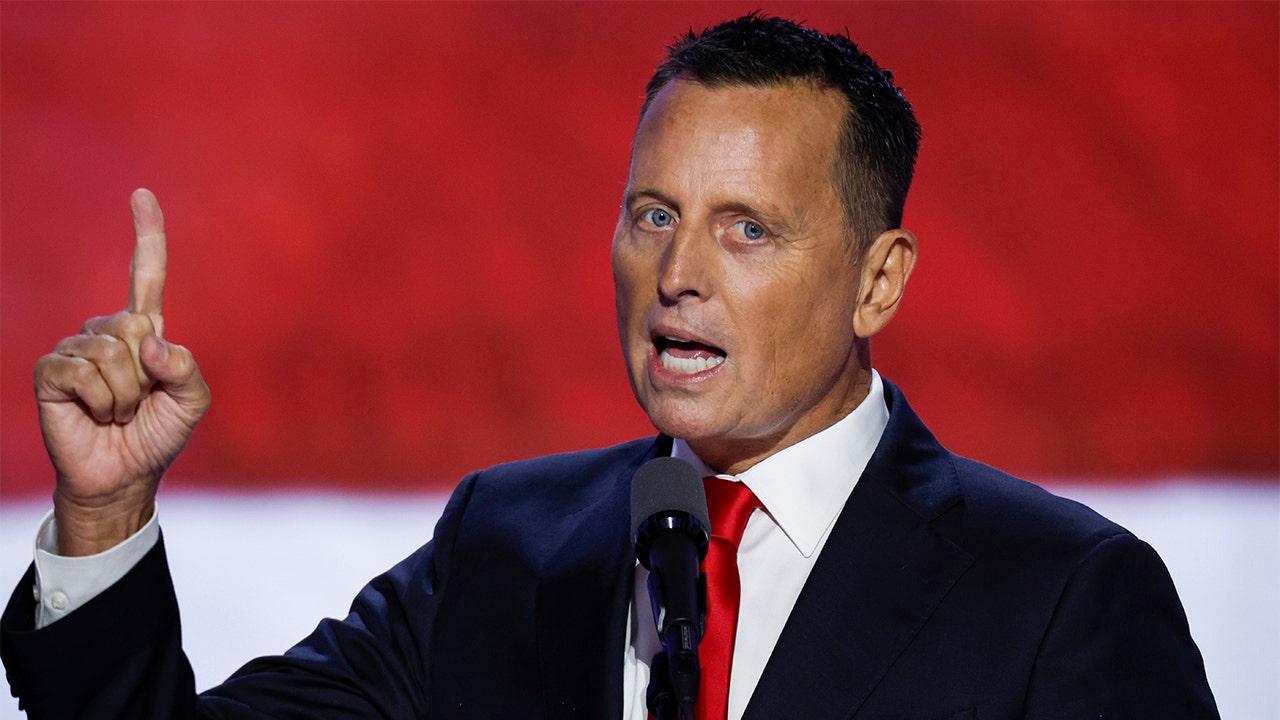North Dakota
Who will and will not be at Gov. Burgum’s ‘major’ announcement in Fargo this week

FARGO — Anyone who pays attention to North Dakota politics or follows the career of Gov. Doug Burgum likely has a few questions about his “major” announcement next week.
Who will be there to cheer Burgum on when he reveals a 2024 presidential run in Fargo around 11:30 a.m. on Wednesday, June 7?
Who will introduce Burgum to the national stage as he declares his quest for the Republican nomination?
We know who will not be present at the Sanctuary Events Center that day: the three members of North Dakota’s all-Republican congressional delegation.
A spokesperson for Sen. John Hoeven said he won’t be able to attend because the Senate will be in session next week, but offered this statement:
“I have known Doug Burgum for a long time. He has been a leader for our state in both the private sector and now as Governor. I have already spoken to Doug and he has my endorsement,” Hoeven wrote.
The senator added: “I wish him the very best and know he will do a great job telling the North Dakota story as he is out campaigning.”
The office of Sen. Kevin Cramer said he won’t attend because of the need to be on Capitol Hill.
Rep. Kelly Armstrong will be in D.C. too, with the House in session.
“Otherwise, he would be there,” said an Armstrong spokesperson regarding the Burgum announcement.
With Burgum’s lifelong family roots in North Dakota, and deep relationships built with classmates at Stanford University, colleagues in the tech world and more recently in state government, there’s likely to be a “who’s who” list in attendance.
Forum file photo
Ed Schafer, North Dakota’s governor from 1992 to 2000 and U.S. Secretary of Agriculture under President George W. Bush from 2008 to 2009, said he’ll be there Wednesday.
“I want to be supportive of a North Dakotan who’s going to run for president,” Schafer said.
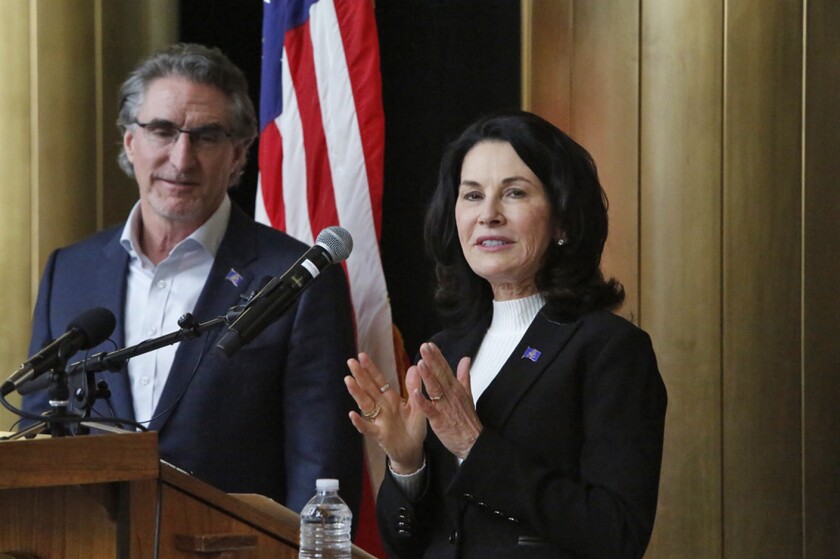
Jeremy Turley / Forum News Service
Several of Burgum’s colleagues in state government have indicated they will be in attendance for the announcement.
Lt. Gov. Tammy Miller, the former chief operating officer in Burgum’s office and former CEO of Border States Electric, has confirmed she will be there to support him.
North Dakota Attorney General Drew Wrigley has cleared his calendar that day to drive from Bismarck to be at Burgum’s event.
“I’m going there for pretty straightforward reasons. I’m going there to support my friend. I’m going there to support my professional colleague,” he said.

Michael Vosburg / The Forum
The two have been acquainted for more than 20 years, Wrigley said, but have worked closely in their state government roles over the last year and a half.
Burgum grew up some 30 miles north of Fargo in Arthur, North Dakota, in a family Wrigley describes as “remarkable.”
“They’re philanthropic, they’re hard working, they’re innovators,” he said.
In Fargo, Burgum helped lead Great Plains Software from a small startup company in 1983 to a billion-dollar company serving 140,000 companies in 132 different countries.
He led Great Plains as CEO until Microsoft acquired the company in 2001, and remained on as senior vice president through 2007.
Burgum also founded Kilbourne Group, a real estate development firm that helped revitalize downtown Fargo, and co-founded Arthur Ventures, a venture capital firm.
Despite his roles in tech, business and government, some give the 66-year-old Burgum little to no chance of securing the nomination or becoming president, while others say not to count him out.
“I consider myself a high energy person and he’s 10 years older than I am. Energy and focus and drive on the campaign trail will not be something that people have to ask about,” Wrigley said about Burgum.
“I think he’s going to be pretty refreshing out there. I mean, nobody likes any of the candidates in the Democrat or Republican parties,” Schafer said with a laugh.
Burgum’s June 7 announcement will be carried live by national television pool outlet Fox News, which will distribute it to other national networks.
It will also be broadcast live on WDAY-TV 6 and streamed live on inforum.com.

North Dakota
Photos: Championship scenes from North Dakota Class A, Class B state volleyball
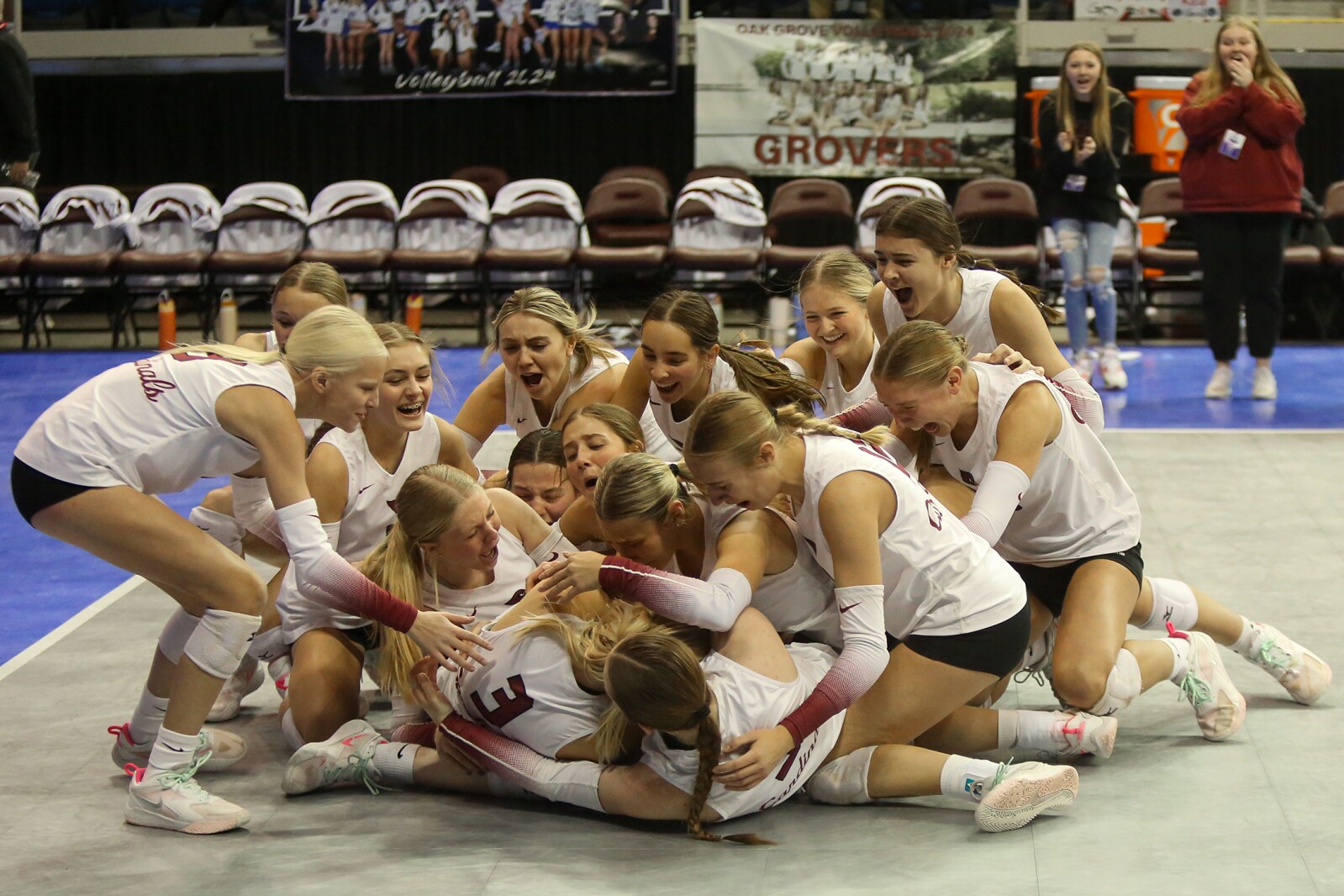
FARGO — Top-seeded Langdon Area-Munich lived up to its billing Saturday night at the Fargodome.
The
Cardinals earned a 15-25, 25-16, 25-15, 25-16 victory
against No. 2-seeded South Prairie-Max to earn the North Dakota Class B volleyball state championship.
Bismarck Century spoiled West Fargo Sheyenne’s bid for a three-peat. The
Patriots scored a 25-21, 18-25, 25-15, 25-22 victory
for the Class A state championship.
Century won its 10th state title in program history.
Below are championship scenes from Saturday night at the Fargodome:
Chris Flynn / The Forum

Chris Flynn / The Forum

Chris Flynn / The Forum

Chris Flynn / The Forum

Chris Flynn / The Forum

Chris Flynn / The Forum

Chris Flynn / The Forum

Chris Flynn / The Forum

Chris Flynn / The Forum

Chris Flynn / The Forum

Chris Flynn / The Forum
Peterson covers college athletics for The Forum, including Concordia College and Minnesota State Moorhead. He also covers the Fargo-Moorhead RedHawks independent baseball team and helps out with North Dakota State football coverage. Peterson has been working at the newspaper since 1996.
North Dakota
North Dakota Badlands national monument proposed with tribes’ support

A coalition of conservation groups and Native American tribal citizens on Friday called on President Joe Biden to designate nearly 140,000 acres of rugged, scenic Badlands as North Dakota’s first national monument, a proposal several tribal nations say would preserve the area’s indigenous and cultural heritage.
The proposed Maah Daah Hey National Monument would encompass 11 noncontiguous, newly designated units totaling 139,729 acres in the Little Missouri National Grassland. The proposed units would hug the popular recreation trail of the same name and neighbor Theodore Roosevelt National Park, named for the 26th president who ranched and roamed in the Badlands as a young man in the 1880s.
“When you tell the story of landscape, you have to tell the story of people,” said Michael Barthelemy, an enrolled member of the Mandan, Hidatsa and Arikara Nation and director of Native American studies at Nueta Hidatsa Sahnish College. “You have to tell the story of the people that first inhabited those places and the symbiotic relationship between the people and the landscape, how the people worked to shape the land and how the land worked to shape the people.”
The U.S. Forest Service would manage the proposed monument. The National Park Service oversees many national monuments, which are similar to national parks and usually designated by the president to protect the landscape’s features.
Supporters have traveled twice to Washington to meet with White House, Interior Department, Forest Service and Department of Agriculture officials. But the effort faces an uphill battle with less than two months remaining in Biden’s term and potential headwinds in President-elect Trump’s incoming administration.
If unsuccessful, the group would turn to the Trump administration “because we believe this is a good idea regardless of who’s president,” Dakota Resource Council Executive Director Scott Skokos said.
Dozens if not hundreds of oil and natural gas wells dot the landscape where the proposed monument would span, according to the supporters’ map. But the proposed units have no oil and gas leases, private inholdings or surface occupancy, and no grazing leases would be removed, said North Dakota Wildlife Federation Executive Director John Bradley.
The proposal is supported by the MHA Nation, the Spirit Lake Tribe and the Standing Rock Sioux Tribe through council resolutions.
If created, the monument would help tribal citizens stay connected to their identity, said Democratic state Rep. Lisa Finley-DeVille, an MHA Nation enrolled member.
North Dakota Gov. Doug Burgum is Trump’s pick to lead the Interior Department, which oversees the National Park Service. In a written statement, Burgum said: “North Dakota is proof that we can protect our precious parks, cultural heritage and natural resources AND responsibly develop our vast energy resources.”
North Dakota Sen. John Hoeven’s office said Friday was the first they had heard of the proposal, “but any effort that would make it harder for ranchers to operate and that could restrict multiple use, including energy development, is going to raise concerns with Senator Hoeven.”
North Dakota
Port: Make families great again

MINOT — Gov.-elect Kelly Armstrong is roaring into office with some political capital to spend. I have some ideas for how to spend it during next year’s legislative session.
It’s a three-pronged plan focused on children. I’m calling it “Make Families Great Again.” I’m no marketing genius, but I have been a dad for 24 years. There are some things the state could do to help.
The first is school lunches. The state should pay for them. The Legislature had a rollicking debate about this during the 2023 session. The opponents, who liken this to a handout, largely won the debate. Armstrong could put some muscle behind a new initiative to have the state take over payments. The social media gadflies might not like it, but it would prove deeply popular with the general public, especially if we neutralize the “handout” argument by reframing the debate.
North Dakota families are obligated to send their children to school. The kids have to eat. The lunch bills add up. I have two kids in public school. In the 2023-2024 school year, I paid $1,501.65 for lunches. That’s more than I pay in income taxes.
How much would it cost? In the 2023 session,
House Bill 1491
would have appropriated $89.5 million to cover the cost. The price tag would likely be similar now, but don’t consider it an expense so much as putting nearly $90 million back in the pockets of families with school-age children. A demographic that, thanks to inflation and other factors, could use some help.
Speaking of helping, the second plank of this plan is child care. This burgeoning cost is not just a millstone around young families’ necks but also hurts our state’s economy. We have a chronic workforce shortage, yet many North Dakotans are held out of the workforce because they either cannot find child care or because the care available is prohibitively expensive.
State leaders haven’t exactly been sitting on their hands. During the 2023 session, Gov. Doug Burgum signed
a $66 million child care package
focusing on assistance and incentives. We should do something bolder.
Maybe a direct tax credit to cover at least some of the expenses?
The last plank is getting vaccination rates back on track.
According to data from the state Department of Health,
the kindergarten-age vaccination rate for chicken pox declined 3.76% from the 2019-2020 school year. The rate for the measles, mumps and rubella vaccine is down 3.72%, polio vaccines 3.54%, hepatitis B vaccines 2.27%, and the vaccine for diphtheria, tetanus and pertussis 3.91%.
Meanwhile, personal and religious exemptions for kindergarten students have risen by nearly 69%.
This may be politically risky for Armstrong. Anti-vaxx crankery is on the rise among Republicans, but, again, Armstrong has some political capital to spend. This would be a helpful place for it. A campaign to turn vaccine rates around would help protect the kids from diseases that haven’t been a concern in generations. It would help address workforce needs as well.
When a sick kid can’t go to school or day care, parents can’t go to work.
These ideas are practical and bold and would do a great deal to help North Dakota families.
-

 Business1 week ago
Business1 week agoColumn: Molly White's message for journalists going freelance — be ready for the pitfalls
-

 Science4 days ago
Science4 days agoTrump nominates Dr. Oz to head Medicare and Medicaid and help take on 'illness industrial complex'
-

 Politics6 days ago
Politics6 days agoTrump taps FCC member Brendan Carr to lead agency: 'Warrior for Free Speech'
-
/cdn.vox-cdn.com/uploads/chorus_asset/file/25739950/247386_Elon_Musk_Open_AI_CVirginia.jpg)
/cdn.vox-cdn.com/uploads/chorus_asset/file/25739950/247386_Elon_Musk_Open_AI_CVirginia.jpg) Technology6 days ago
Technology6 days agoInside Elon Musk’s messy breakup with OpenAI
-

 Lifestyle7 days ago
Lifestyle7 days agoSome in the U.S. farm industry are alarmed by Trump's embrace of RFK Jr. and tariffs
-

 World6 days ago
World6 days agoProtesters in Slovakia rally against Robert Fico’s populist government
-

 News6 days ago
News6 days agoThey disagree about a lot, but these singers figure out how to stay in harmony
-

 News6 days ago
News6 days agoGaetz-gate: Navigating the President-elect's most baffling Cabinet pick














